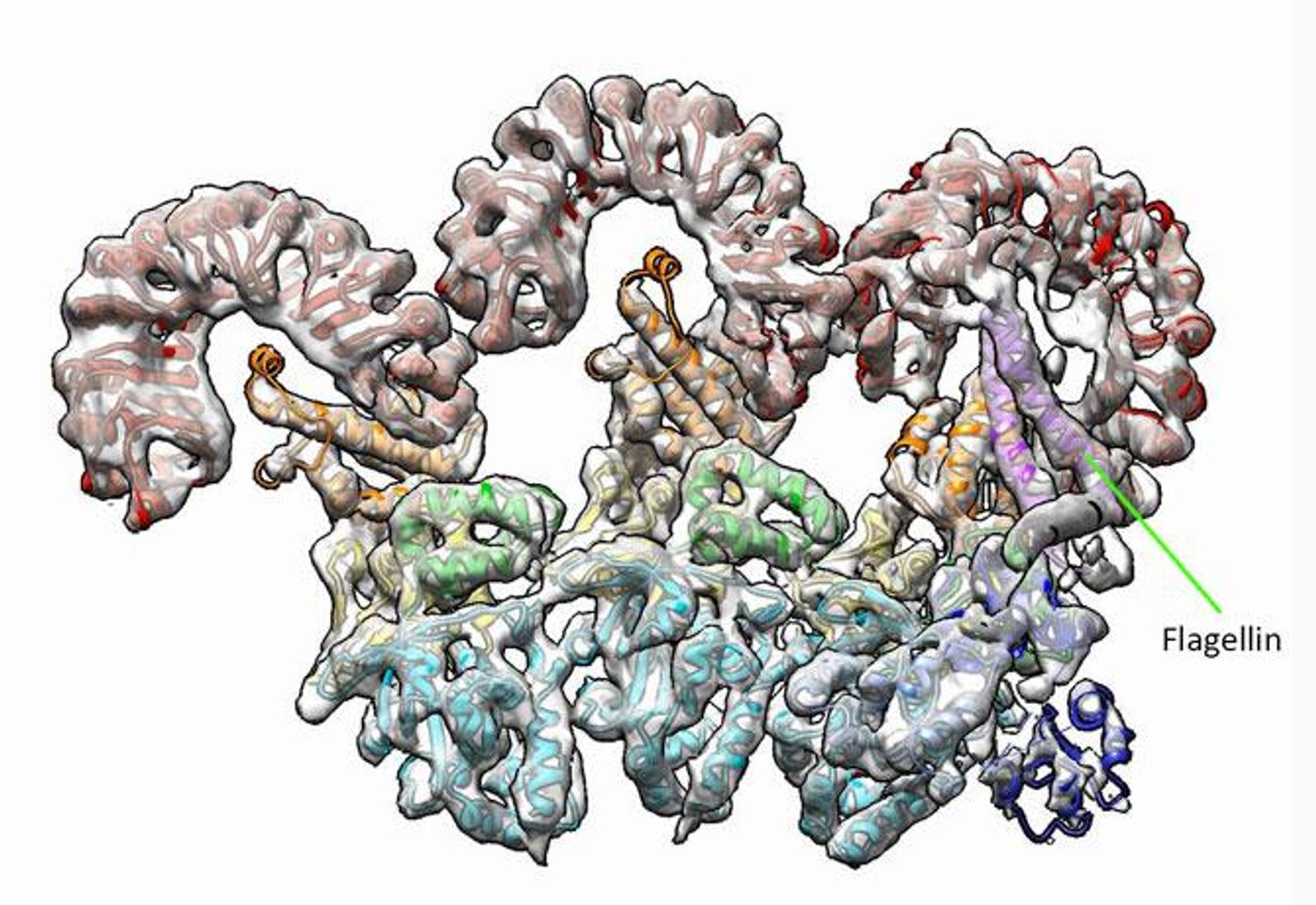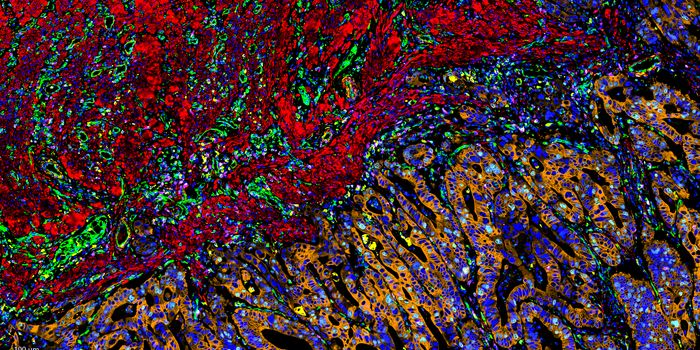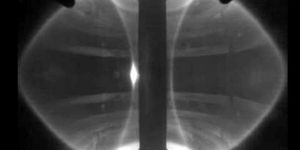Exploring the Powers of the "Inflammasome" During Infection
Without the inflammasome, the immune response to invading pathogens would be severely flawed. This protein conglomerate is a key part of the immune system, and a new study from the Department of Energy's Lawrence Berkeley National Laboratory explores its structure and function in response to an infection by the bacteria that cause Legionnaires’ disease, Legionella pneumophila.
The basic structure of the inflammasome is formed when two proteins clump together, including NLRC4 and NAIP5, which is attached to a flagellin molecule. Flagellin is a bacterial protein component of a tail-like fixture that helps bacteria be mobile. Researchers used a visualization technique called cryo-electron microscopy to get a high-resolution picture of this organization.
“We can directly visualize the molecular interface between flagellin and NAIP5, revealing how the bacterial protein is recognized," explained co-lead investigator Eva Nogales. "We found that flagellin is in contact with six different parts, called domains, of NAIP5, some of which had not previously been thought to be important for recognizing flagellin - and one of which had no known function at all."
Nogales and other researchers are working off of their theory that the number of NAIP5 domains that bind flagellin is an important aspect of the inflammasome’s functionality.
"If just one bacterium had a mutation in flagellin that allowed it to sneak past NAIP5, it would have a massive advantage and multiply,” explained study co-lead author Nicole Haloupek. “We hypothesized that the fact that so many domains of NAIP5 connect to flagellin meant that major mutations would be needed for a bacterium to go unnoticed."
Speaking of the inflammasome’s functionality…
The formation of the inflammasome, including binding of NLRC4 and NAIP5, initiates a “chemical alarm” that results in pyroptosis, an explosive form of programmed cell death. Pyroptosis induces death in infected cells, which then release even more chemicals that recruit even more immune cells to the site of infection.
Researchers tested the functionality of the inflammasome with multiple strains - each with their own mutant version of flagellin - of Legionella pneumophila bacteria. While minor mutations in this bacterial protein had no effect on NAIP5’s ability to detect it, major mutations were capable of allowing bacterial cells to avoid detection by NAIP5. The downside to these mutations for the bacteria? They impaired their mobility.
On the other end of the study, researchers were able to draw up a model demonstrating activation and assembly of the inflammasome. "When flagellin binds NAIP5, it wedges NAIP5 into an open, active configuration that exposes the surfaces of NAIP5 that connect to NLRC4,” explained co-lead investigator Russell Vance. “Once the first NLRC4 connects to NAIP5, this creates a surface that can attract additional NLRC4 molecules, which then glom onto the growing inflammasome."
With all of the structural and functional details concerning the inflammasome laid out in close detail, scientists are hopeful that they can use the information to learn more about the immune response, and, potentially, ways to improve it.
The present study was published in the journal Science.









